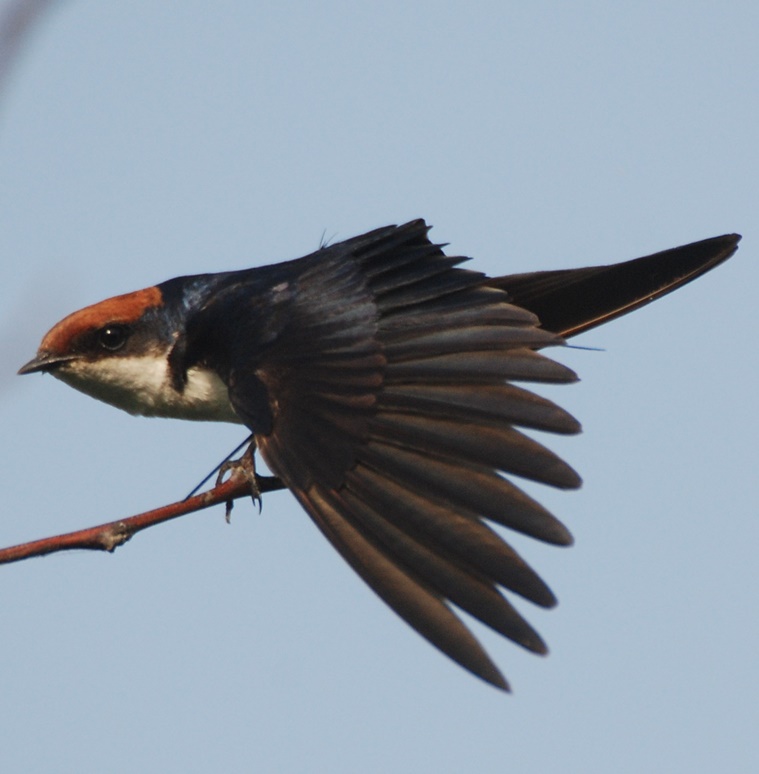How Mother Nature gave wings to her fancy by devising ‘flight’
When humans take for granted nature’s feats, the act of flying is one such — from feather and wing designs, decorative and functional, to different techniques for birds and insects.
 Big broad wings for soaring. (Source: Ranjit Lal)
Big broad wings for soaring. (Source: Ranjit Lal)Little children — especially in the “developed” world are spun yarns every Christmas about Santa’s massive toy workshop in the North Pole where toy orders are taken from kids around the world, elves get busy making them and Santa personally distributes them to delighted children everywhere (only if they’ve been good). But kids soon cotton on to the impossibility of this endeavour, so when the scales fall, it would be nice to replace that story with another — equally miraculous — but true.
Mother Nature runs the most fantastic and advanced Research and Development facility ever devised, so that every living species on the planet is “bespoke”. Her research labs have been functioning non-stop for around the last four billion years or so. Some of her products take millions of years to perfect, few reach the stage where no further development is required; she goes on refining her designs, generation after generation, lest she gets trolled by disgruntled users.
 The sleek streamlined shape of the swallow. (Source: Ranjit Lal)
The sleek streamlined shape of the swallow. (Source: Ranjit Lal)
This process is evolution, and we humans, who think we are the most “evolved” of all, neither think of nor appreciate her achievements — even if we’ve copied her ideas wholesale — without paying a penny in royalties (worse, we’re busy wrecking her in situ labs). Let’s look at some of her miraculous achievements:
Take flight, for example. Aeons ago, some creatures on earth decided that there had to be a better way of getting around than running around or even swimming. To escape from other creatures who could run and swim faster than they could (and so could have them for lunch), they needed something more. In desperation, they began jumping off trees and cliffs. Mother Nature noticed and tweaked the genes in some of these creatures, gradually turning their scales into feathers and feathers into wings. Keratin — which they already had in their hair, nails and scales — was the perfect raw material for this. Strong, flexible, and light. She also decided that feathers ought to serve multipurpose. Some were designed to keep the creatures warm (as anyone with a goose-feather down jacket knows), some would turn to powder — to keep the other feathers in top condition — and the most important ones would develop into wings — so the creature could fly. Obviously, she had studied the basics of aerodynamics and knew that the flight feathers had to serve dual purpose: they had to provide both lift and thrust.
Another great idea was to add pigments to feathers, or make them prismatic so that they were not only glamorous (and attractive to the opposite sex), but also, in many cases, camouflaged the user. And the whole creature (now called a bird) had to be gradually redesigned so that it faced the least resistance from the air — it had to be streamlined — in order to be energy-efficient.
Powering flight posed another problem. Some birds wanted to fly enormous distances, and needed explosive bursts of power to escape predators. The marathoners needed a constant replenishment of oxygen to their muscles, that meant a constant supply of blood (which is why waterfowl has dark meat) and the “exploders” (like partridges and chickens) were given glycogen (a form of sugar), which provided the needed bursts of power — but which depleted rapidly (which is why they have white meat).
Of course, not all customers were happy! Some wanted to streak through the sky like meteors, others to spend the whole day at 10,000 ft without having to flap their wings even once, still others wanted to be able to do aerobatics, and some (like anti-vaxxers), didn’t want to fly at all — some still preferred swimming and diving or simply running. Ever-accommodating (the customer is always right!) Mother Nature obliged. So, vultures, condors and pelicans developed enormous broad wings on which they caught the thermals: falcons, swallows and swifts narrow “fastback” wings for speed and agility, and a vast majority — like mass-market cars — were general-purpose and could do both jobs, adequately if not spectacularly. The “runners” (like ostriches) were given massively long and powerful legs (and wings which they could use to flounce around with), and the “swimmers” (like penguins) had their wings turned into flippers.
But there were myriads of smaller creatures (that far outnumbered birds) who wanted to fly too: they wore their skeletons outside their bodies, usually had the aerodynamics of a brick, were cold-blooded and had no backbone. Insects! Mother Nature went back to the drawing board. These little guys were too leaden to get off the ground using conventional aerodynamics — there had to be an out-of-the-box solution. So how about unsteady aerodynamics? They had chitin — another wonder material — which was strong and so flexible you could twist it over completely — perfect for wings and twice as efficient as birds’ wings: by twisting they could generate both lift and thrust with both the down-stroke and up-stroke. (In the avian world, only the hummingbird has filched this idea.) Also, Mother Nature knew all about tornadoes — how they could suck up houses — and used the same principle to enable insects to fly by making them generate little tornadoes at the tips of their wings (called vortices), so up, up and away they went.
This is just one miraculous story among thousands: we’ll check out some of the other wonders in future columns.



- 01
- 02
- 03
- 04
- 05




























